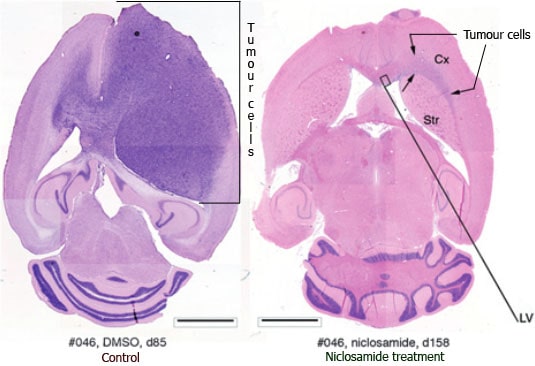Glioblastoma. Glioblastoma multiforme (GBM) is one of the most aggressive tumours arising in the central nervous system. Studies have shown that daily niclosamide administration significantly decreases the size and metastatic potential of advanced brain tumours. It also increases the overall survival time at least twice in mice xenografted with glioblastoma.
Niclosamide is thought to halt the Notch pathway, thus inhibiting tumorigenesis (this anticancer target is especially prolific in case of glioblastoma). Additionally, it stops the WNT/CTNNB1-, mTOR-, and NF-κB signaling cascades, which in turn prevents the tumours from further growth as well as spreading to other sites of the body. [1]
Research results also suggest that niclosamide could have a positive synergistic effect on glioblastoma in combination with the gold standard in brain cancer therapy – temozolomide. Together both agents seem to kill cancer stem cells and lower the aggressiveness better than each drug on its own. [2]

Fig. 1. Comparison of horizontal brain sections with tumours between rodent groups that received no treatment and those who received niclosamide. In the left we can see an enormous glioblastoma that is crossing and invading various parts of the brain. In the right is an example after daily niclosamide treatment, only a few tumour cells are left at the initial site of glioblastoma implantation. Retrieved from [3].